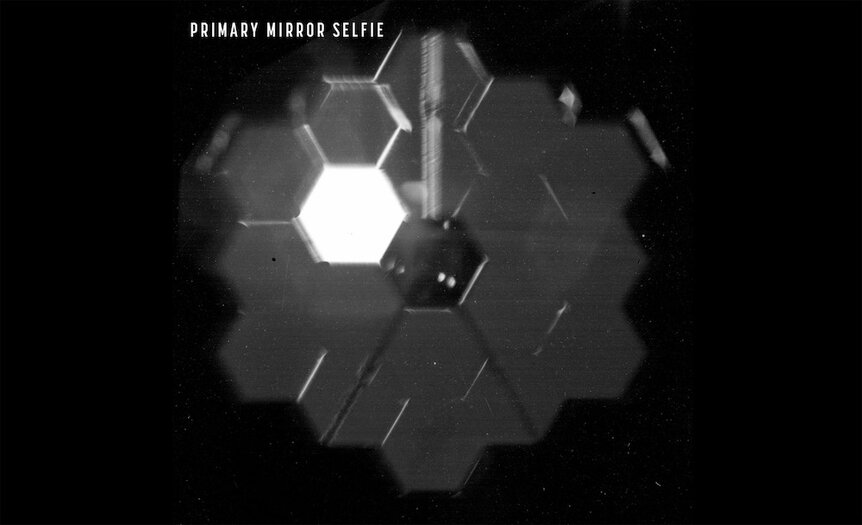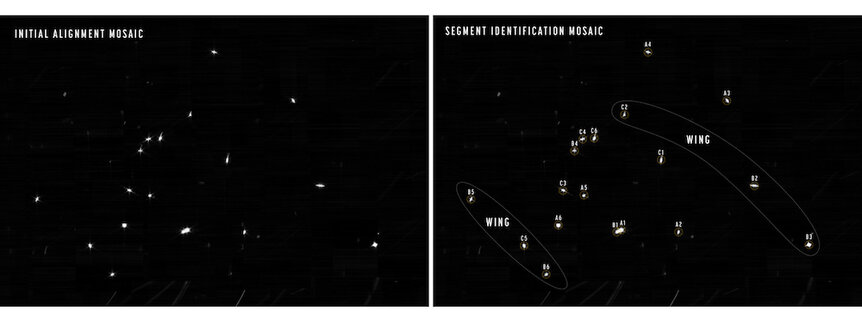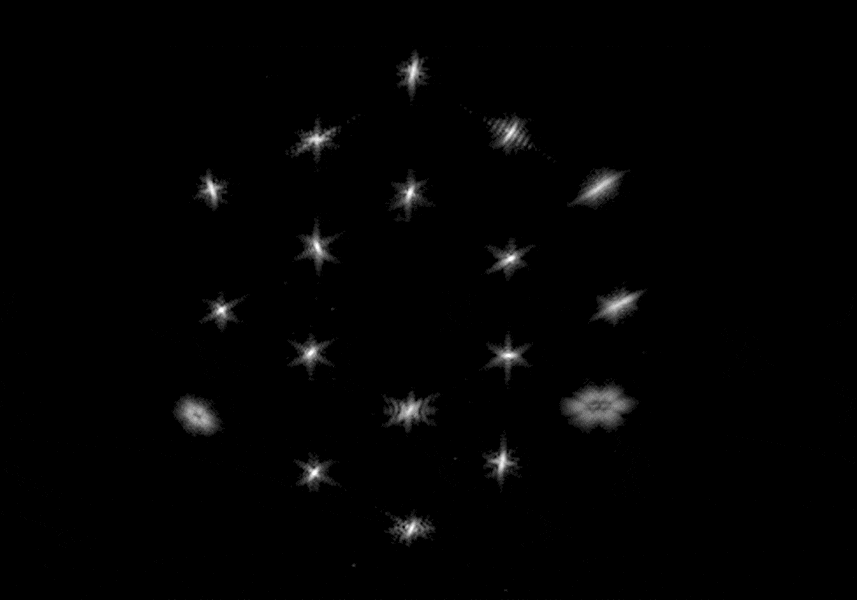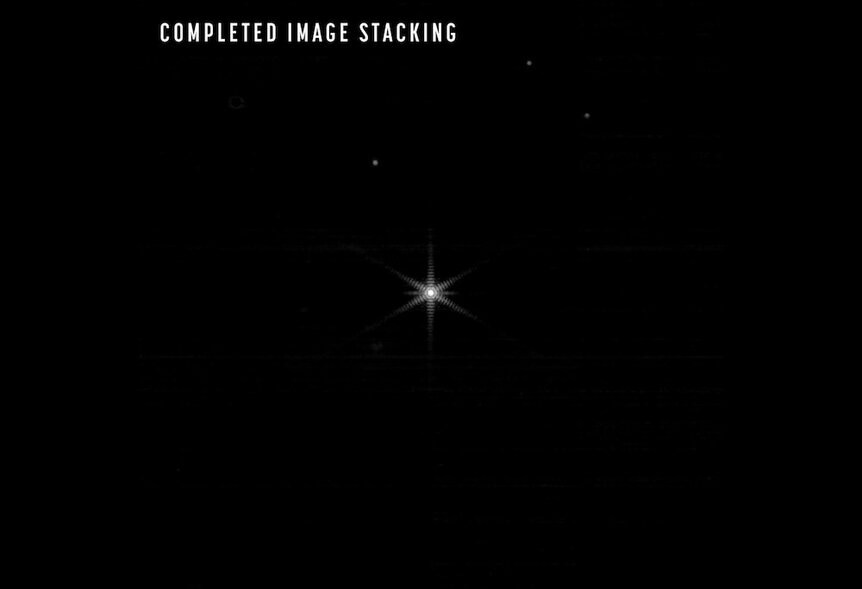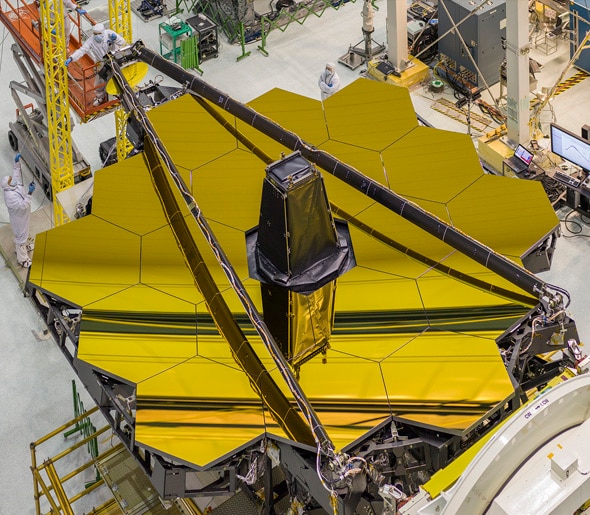Create a free profile to get unlimited access to exclusive videos, sweepstakes, and more!
JWST update: All 18 eyes of the telescope now see a single, focused image! Kinda!
James Webb Space Telescope major milestone achieved as its 18 eyes act as one.
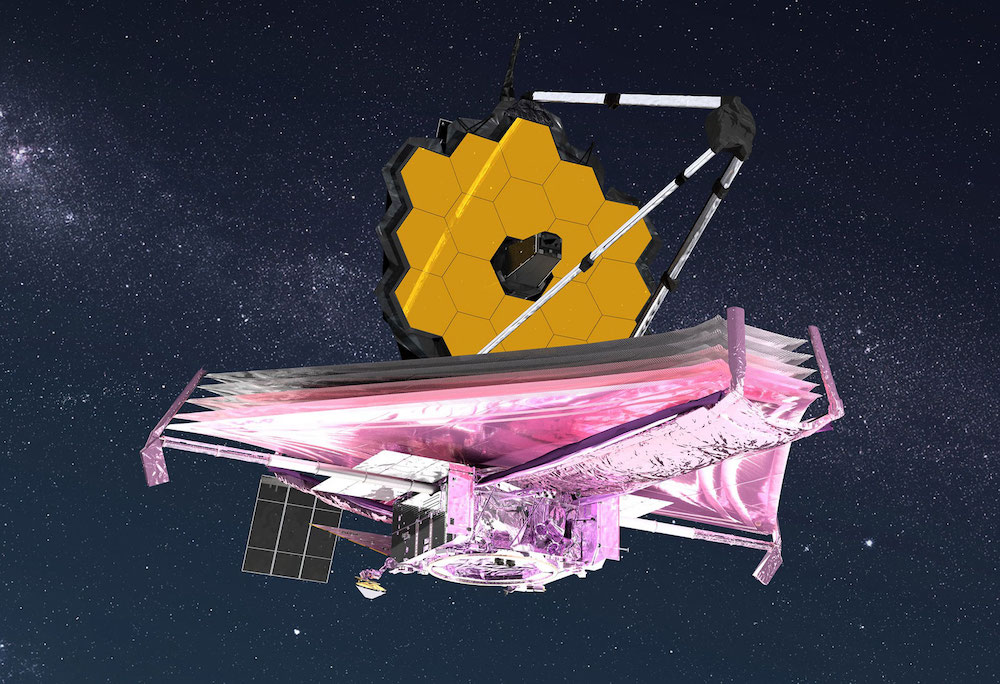
After a series of important steps for the James Webb Space Telescope that have gone really well, there’s even more great JWST news: The 18 small mirrors have gone through their initial alignment and focus, and can now produce a single image of a star!
The James Webb Space Telescope launched into space on December 25th, and reached its parking orbit spot 1.5 million kilometers from Earth about a month later. Since that time it’s been deploying various observatory components, and everything has been running amazingly smoothly.
The primary mirror, designed to look at infrared light, is actually not cast from a single piece, but is instead made up of 18 hexagonal smaller submirrors, each about 1.3 meters wide. This allowed engineers to design the telescope to fold up so it could fit in the relatively small Ariane 5 rocket payload fairing. There’s a single column of 12 mirrors with two "wings" of three mirrors on either side that were folded for launch, and unfolded once the observatory was in space. The total diameter of the mirror is about 6.5 meters. Impressively huge.
Unfolding the origami pieces was just the initial step, though. The 18 submirrors then needed to be aligned so that they can all act as a single unit, sending their individual beams of light as a team to fall on the same place in the observatory’s cameras. Each mirror has mechanisms on its backside to allow it to be tipped, tilted, and push/pulled to make sure they are focused and aligned.
The instrument used to detect the light from the mirrors in this procedure is the Near Infrared Camera, or NIRCam; "near" in this case means the shortest wavelengths of infrared — specifically, 0.6 microns (red light) out to 5 microns (over six times the reddest wavelength we can see with our eyes). It was the first scientific instrument turned on as JWST cruised to its current orbit.
The first step in the mirror alignment process was simply pointing the telescope at a star and seeing what each mirror was doing. Scientists and engineers chose the star HD 84406, a Sun-like star that’s about 260 light years from us. It has well known infrared characteristics and is the right brightness. The initial image, as expected, showed 18 blurry blobs of light; then each mirror was moved to identify which image came from which mirror — there are three groups of mirrors labeled A, B, and C, with each mirror in the group numbered 1-6.
After that the mirrors were roughly aligned into a hexagonal array representing the mirrors' placement in the larger group. Once that was done, each mirror was then adjusted by very small steps to a rough focus.
Then it was time for the next big step: Tip and tilt the mirrors so that each individual image of the star came together onto a single spot in the camera. This process, called "image stacking," went very well.
This is a funny image. Looks simple, doesn't it? No glorious gas clouds, no magnificent galaxies with sprawling spiral arms… just a weirdly shaped dot, a single otherwise unremarkable star (and a few other dots that I suspect are fainter stars).
But this shows that JWST is working, and is well on its way to being capable of doing science! It’s a big achievement, and an exciting one.
If you’re wondering about the weird shape of the star, there are several reasons for that. The three bright lines going through it are diffraction spikes, caused by light flowing around the three legs of the tripod holding the secondary mirror in place — the primary mirrors collects the light from a target, reflects it into the secondary in front of it, which then reflects that light into a hole in the center of the primary and into the detectors behind the primary.
The gaps in the spikes are caused by interference. Light is a wave, and where a crest of one wave meets the trough of another they cancel, so no light is seen in those spots. The overall hexagonal shape of the bright center is because the mirrors have not yet had their focus perfectly adjusted. That will happen later; the next step in this process is called course phasing, where very careful measurements of the stacked light from each mirror is better aligned, to within the wavelength of the light detected. After that will come fine phasing, where the mirrors are exceedingly carefully measured and adjusted. Once this is done a similar procedure will be iterated using the other scientific instruments on board, to make sure everything is aligned and focused as precisely as possible.
After that? SCIENCE.
But we're still a few months away from that. These next steps take a while because of the ridiculous accuracy needed. Where we’re at now is like when you go to the eye doctor for a vision test, and they show you two slightly blurry images and ask you which one is better. It may take four or five tries to zero in on the correct prescription to focus your eyes, and you’re at step 2 or 3. For JWST there are seven steps, with lots of adjustments made in each step, and it’s at step 5 in its own process. The last two take about as much time as the first five, and are expected to be completed in the next few months.
And then, hopefully, in July we get the SCIENCE. Stay tuned.
